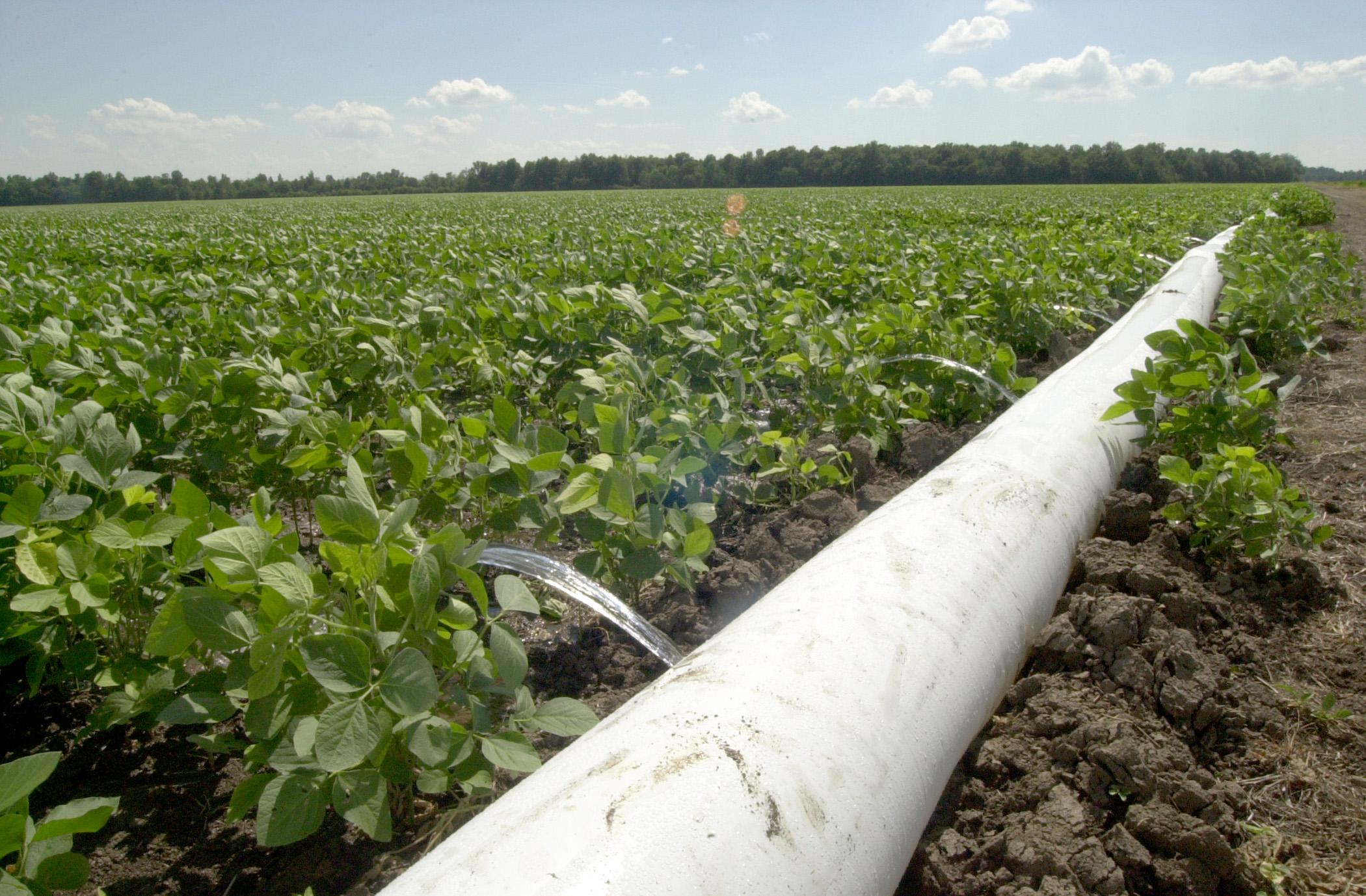Information Possibly Outdated
The information presented on this page was originally released on September 27, 2012. It may not be outdated, but please search our site for more current information. If you plan to quote or reference this information in a publication, please check with the Extension specialist or author before proceeding.
MSU turns PHAUCET on for Delta soybeans
By Dr. Rebekah Ray
MSU Delta Research and Extension Center
STONEVILLE – Mississippi State University scientists are evaluating a free software tool that can increase irrigation efficiency for the state’s soybean producers.
MSU Extension Service irrigation specialist Jason Krutz, MSU Extension and research professor Tom Eubank, systems engineer Lyle Pringle and MSU Plant and Soil Sciences professor Joe Massey are field testing a computer program that calculates furrow irrigation system performance and helps improve irrigation effectiveness. Eubank, Pringle and Massey are also Mississippi Agricultural and Forestry Experiment Station researchers.
“The PHAUCET, or Pipe Hole and Universal Crown Evaluation Tool, has the potential to reduce water pumped from the Delta’s underground water supply. This supply has declined over the years because of traditional irrigation approaches and increased irrigation acreage,” Krutz said. “PHAUCET can also save irrigated crop production costs.”
The software was developed by engineers with the U.S. Department of Agriculture’s National Resources Conservation Service in Missouri.
The program uses engineering equations to calculate pipe pressure and flow rates for each watered furrow. It applies system flow rate, pipe diameter, watered furrow spacing, row lengths and elevations down the length of the pipe. The user can select a hole size design for each watered furrow to deliver water uniformly without bursting the pipe.
“The program can compute proper hole size designs for fields that vary in layout from fairly square to rectangular to less conventional layouts,” Pringle said.
The PHAUCET irrigation design should allow water to reach the end of long or short rows more uniformly. Thus the producer will not waste water through runoff while waiting for other rows to finish watering, saving time and money. The savings gained with PHAUCET could be lost if the irrigation is allowed to run longer than needed, so proper irrigation timing is necessary.
Timers that shut off the well automatically can help with irrigation management, said Massey.
“For example, if a producer expects that an irrigation set will finish early in the morning, say at 2 a.m., but he or she is unable to shut off the well at that time, excess water could run off the field, reducing the water and energy savings normally associated with PHAUCET,” Massey said. “Installation of a 24-hour spring-wound timer on both electric and non-electric wells would increase the efficiency of PHAUCET by letting the producer set the timer to shut the well off at a specific time.”
Producers can check the field and assess how well the crop was watered at a time more convenient to their schedules, he said.
In most cases, timers should pay for themselves in about two seasons.
“PHAUCET could increase water use efficiency while at the same time reduce watering times and thus reduce producer costs in irrigation,” Eubank said, whose work focuses on soybeans.
Many Mississippi soybean producers irrigate their crops five or six times a season by applying 2 to 4 inches of water an acre per irrigation.
“We have compared PHAUCET with standard irrigation practices on several producer fields, and analyzed the number of irrigations during the season, the amount of water, the duration of each irrigation event and soybean yields between both systems,” Eubank said.
Preliminary results over a three-year period have shown about a 20 percent savings in both pumping times and water use with the PHAUCET system over the conventional system, he said.
“We hope that these numbers will continue to hold true. If they do, and PHAUCET is widely adopted, farmers could reduce or reverse the declining underground water table,” Krutz said.
The Mississippi Soybean Promotion Board is funding this research. With a production value of $860 million last year, soybeans were Mississippi’s leading row crop.
Producers can download the PHAUCET program at no charge from the Yazoo-Mississippi Water Management District’s website at http://www.ymd.org/phaucet.htm.








